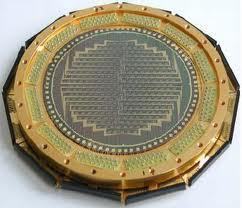What is a Bolometer?
Bolometers find and measure very small amounts of electromagnetic radiation. They are also referred to as actinic balances and measure electromagnetic radiation in radio, ultraviolet, and gamma ray forms. Since their first use, bolometers have been modified to detect other particles and to be used in physics experiments.
Who Invented the Bolometer?
Samuel Pierpont Langley invented the bolometer in the late 1800s. The first bolometer was used with a telescope in order to measure infrared radiation on the Moon and other astronomical objects. It consisted of two chambers with platinum strips that formed a Wheatstone bridge, which was connected to a battery and galvanometer. Soot was used to cover all but one of the strips and form the bridge. The exposed strip’s temperature increased when it came in contact with the electromagnetic radiation, which altered its electrical resistance and created a temperature sensor.
Bolometer Types
Cold electron bolometers are very sensitive and detect cosmological radiation. They use a superconducting-insulator-normal metal tunnel junction and the energy lost is used to cool the absorbing part of the device. Hot electron bolometers measure sub-millimeter and infrared radiation that the cold electron bolometer cannot measure. Microbolometers detect infrared radiation in thermal cameras such as the Forward Looking Infrared (FLIR) cameras used for military purposes. These cameras measure infrared radiation between 8 and 13 microns and the resistance that the camera records is converted into temperatures that create and IR image.
Bolometer Uses
Bolometers are used for cosmological radiation, and infrared and particle detection. Although bolometers are very effective, they do not differentiate between non-ionized and ionized particles. Also, bolometers do not directly unload or dispel energy when they are used as a thermal detector. When a bolometer is used in particle physics as a particle detector, it identifies high-energy particles.


Comments - No Responses to “What is a Bolometer?”
Sorry but comments are closed at this time.